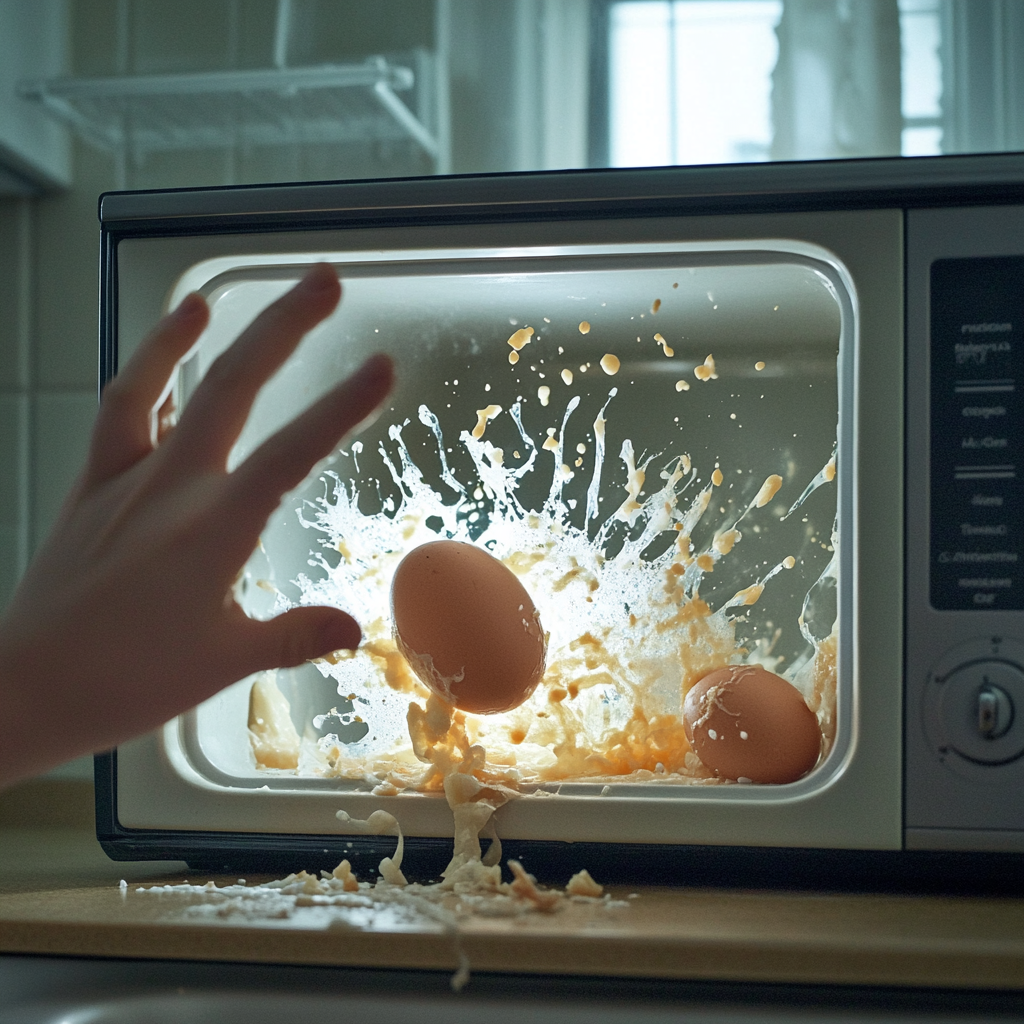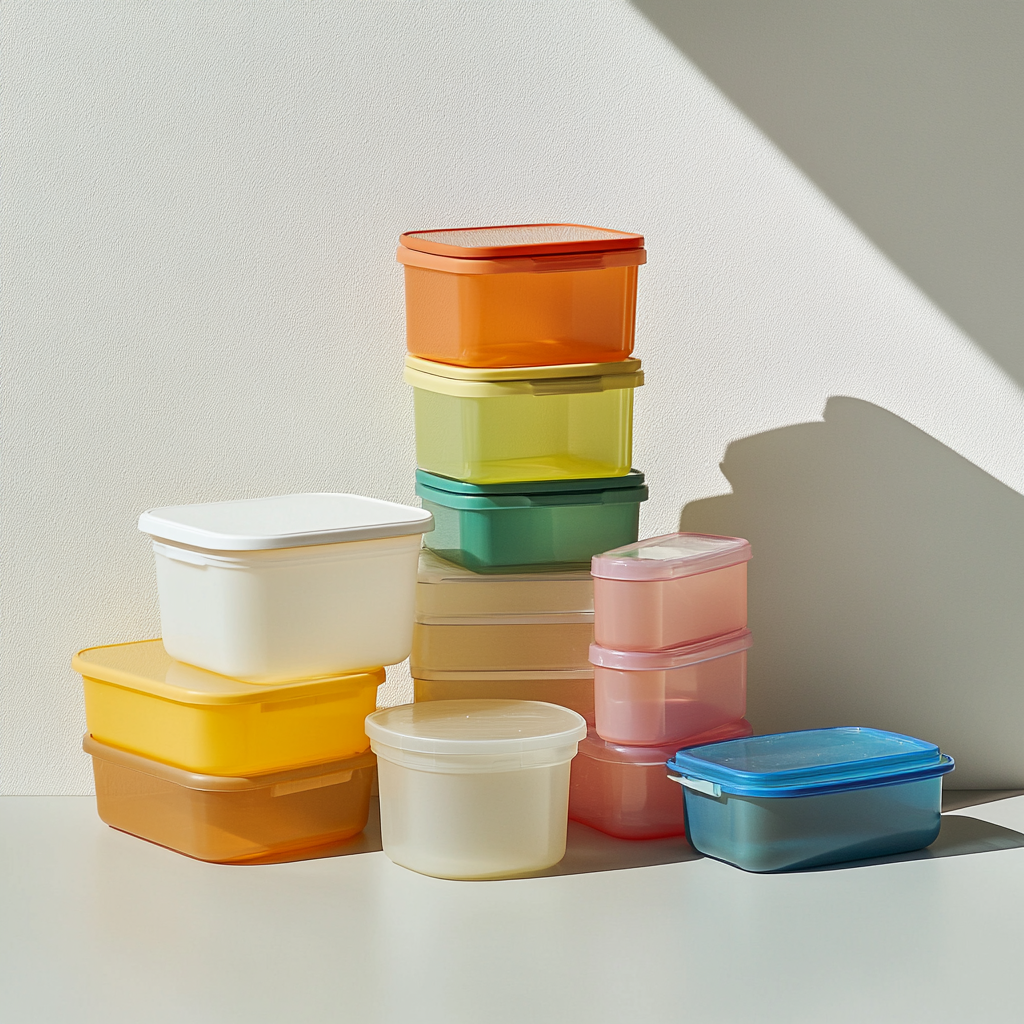We’ve all been there – staring at our leftovers, wondering if that container is microwave-safe or if we’re about to star in our own kitchen disaster movie. It’s amazing how such a simple appliance can turn into a minefield of potential mishaps. But fear not, we’re about to embark on a journey through the do’s and don’ts of microwave madness.
The Aluminum Foil Fireworks Show
Let’s start with a classic microwave no-no: aluminum foil. Sure, it’s great for wrapping up leftovers, but put it in the microwave, and you’re in for a mini Fourth of July celebration. The metal reflects those pesky radio waves, causing sparks that could lead to a fire faster than you can say “popcorn button.” Instead of risking an impromptu light show, transfer your food to a microwave-safe container. Your taste buds (and your fire department) will thank you.
The Incredible Exploding Egg

Picture this: you’re in a rush, and you decide to reheat that hard-boiled egg for a quick protein boost. Sounds harmless, right? Wrong! That innocent-looking egg is a ticking time bomb. The steam pressure builds up inside the shell, turning your healthy snack into a potential eggsplosion. Save yourself the cleanup (and the embarrassment) by slicing your eggs before reheating or, better yet, enjoy them cold. Your microwave’s interior will remain egg-free, and you’ll avoid starring in your own “why did I do that?” moment.
The Styrofoam Meltdown
Ah, Styrofoam – the MVP of takeout containers. But before you pop that container of leftover lo mein into the microwave, pause for a moment. Styrofoam and microwaves mix about as well as oil and water. When heated, these containers can melt faster than an ice cream cone in July, releasing chemicals into your food that are definitely not part of a balanced diet. Instead, transfer your takeout to a microwave-safe plate or bowl. Your food will heat evenly, and you won’t be left with a puddle of melted plastic where your dinner used to be.
The Great Grape Explosion
Here’s a weird one for you: grapes. Yes, those innocent little fruits can turn into miniature plasma bombs when microwaved. The unique shape and composition of grapes can cause them to superheat and create plasma – you know, that stuff stars are made of. While it might sound like a cool science experiment, it’s not exactly what you want happening next to your leftover lasagna. If you must have warm grapes (but why?), try roasting them in the oven instead. Your microwave will thank you for not turning it into an accidental particle accelerator.
The Spicy Pepper Gas Chamber

Love spicy food? Great! Just don’t try to shortcut your way to flavor town by nuking those hot peppers. When microwaved, chili peppers release capsaicin, the compound responsible for their heat. But instead of just spicing up your dish, it turns your kitchen into a DIY pepper spray factory. The vapors can irritate your eyes, throat, and lungs faster than you can say “jalapeño.” Stick to chopping and sautéing your peppers on the stove. Your sinuses (and your unsuspecting family members) will be eternally grateful.
The Takeout Box Fiasco
We’ve all been there – too lazy to transfer the Chinese takeout to a plate. But before you pop that whole container in the microwave, take a closer look. Many takeout boxes have sneaky metal handles or linings that can cause sparks and potentially set your late-night snack ablaze. It’s like playing Russian roulette with your chow mein. Instead, take those extra few seconds to transfer your food to a microwave-safe dish. Bonus: your food will heat more evenly, and you won’t have to explain to your roommates why the kitchen smells like a fireworks display gone wrong.
The Processed Meat Health Hazard
Hold the bacon! While it might be tempting to zap that package of processed meats for a quick BLT, you might want to reconsider. When nuked, these meaty treats can form something called cholesterol oxidation products (COPs). Despite their cool acronym, COPs are not your friends. They’ve been linked to various health issues that you definitely don’t want on your plate. Instead of microwaving, try pan-frying your bacon or using pre-cooked options. Your arteries will high-five you, and your sandwich will be all the better for it.
The Travel Mug Mishap
In a rush and need to reheat that coffee? Before you toss your travel mug into the microwave, hit the brakes. Many travel mugs, especially those made of stainless steel, are microwave no-gos. The metal can cause arcing (that’s science-speak for “really scary sparks”), and even non-metal mugs might not be designed to withstand microwave heat. Plus, the insulation can prevent the liquid inside from heating properly, giving you a false sense of tepid security. Instead, transfer your beverage to a microwave-safe mug for reheating. Your coffee will be hot, and your favorite travel mug will live to see another commute.
The Plastic Container Conundrum

Not all plastics are created equal, especially when it comes to microwaving. While some containers are designed to withstand the heat, others can leach chemicals faster than you can say “BPA-free.” Before you nuke that leftover pasta, check the bottom of the container for a microwave-safe symbol. No symbol? Play it safe and transfer your food to glass or ceramic. And those single-use containers from your last takeout order? They’re a one-and-done deal – not meant for microwave encores. Your food will taste better without a side of melted plastic, trust us.
The Nothing Nuke
Believe it or not, one of the worst things you can put in your microwave is… nothing at all. Running an empty microwave is like revving a car engine with no oil – it’s a fast track to Broken Appliance City. Those microwaves need something to heat up; otherwise, they can bounce around and damage the interior. So, the next time you’re tempted to run the microwave “just to check if it’s working,” resist the urge. If you must test it, use a microwave-safe cup of water. Your microwave will thank you for not sending it on a solo mission to nowhere.
The Lidless Wonder
Last but not least, let’s talk about the unsung hero of microwave cooking: the lid. Heating your soup without a cover is like going outside in a rainstorm without an umbrella – you’re just asking for a mess. Lidless containers can lead to uneven heating, splatters, and in extreme cases, mini food explosions that redecorate your microwave’s interior. Always use a microwave-safe cover or at least a paper towel. Your food will heat more evenly, and you won’t spend your evening scrubbing spaghetti sauce off the microwave ceiling.
There you have it, folks – a guided tour through the wild world of microwave mishaps. By avoiding these common pitfalls, you’ll not only extend the life of your trusty kitchen zapper but also reduce your chances of starring in the next viral “microwave fail” video. Remember, when in doubt, always check for that microwave-safe symbol, and don’t be afraid to dirty an extra dish in the name of safety. Your taste buds, your microwave, and your homeowner’s insurance will all thank you. Now, go forth and reheat with confidence!
